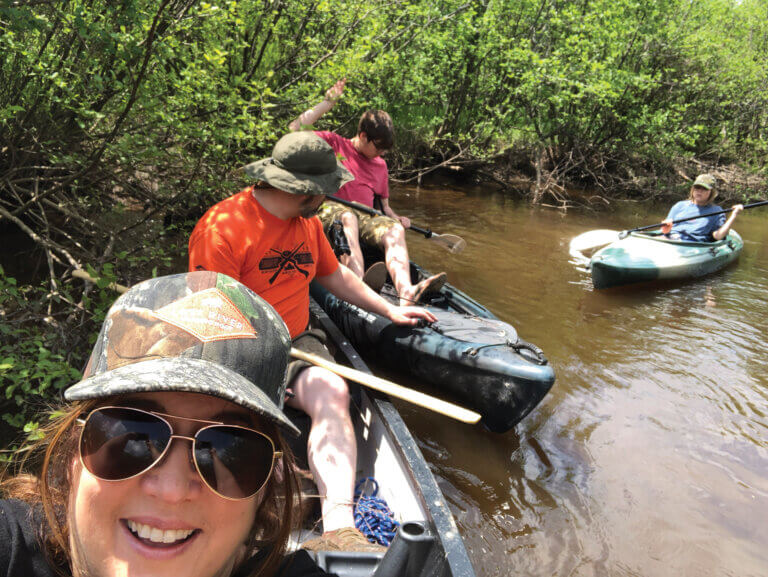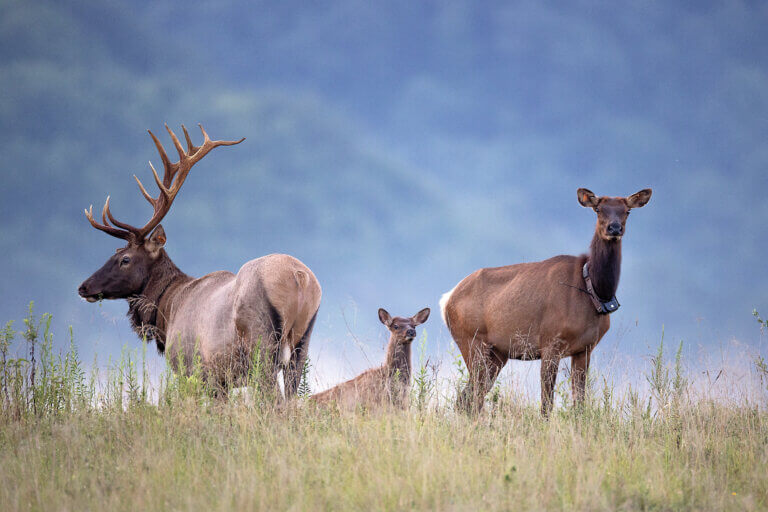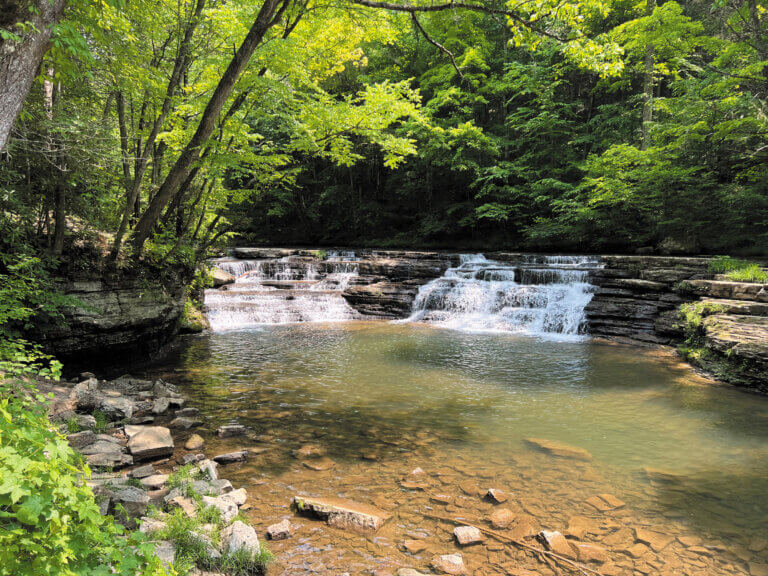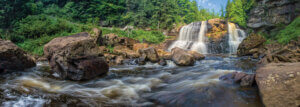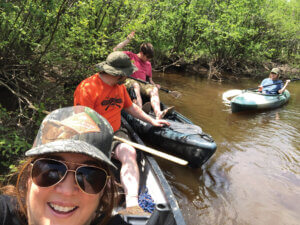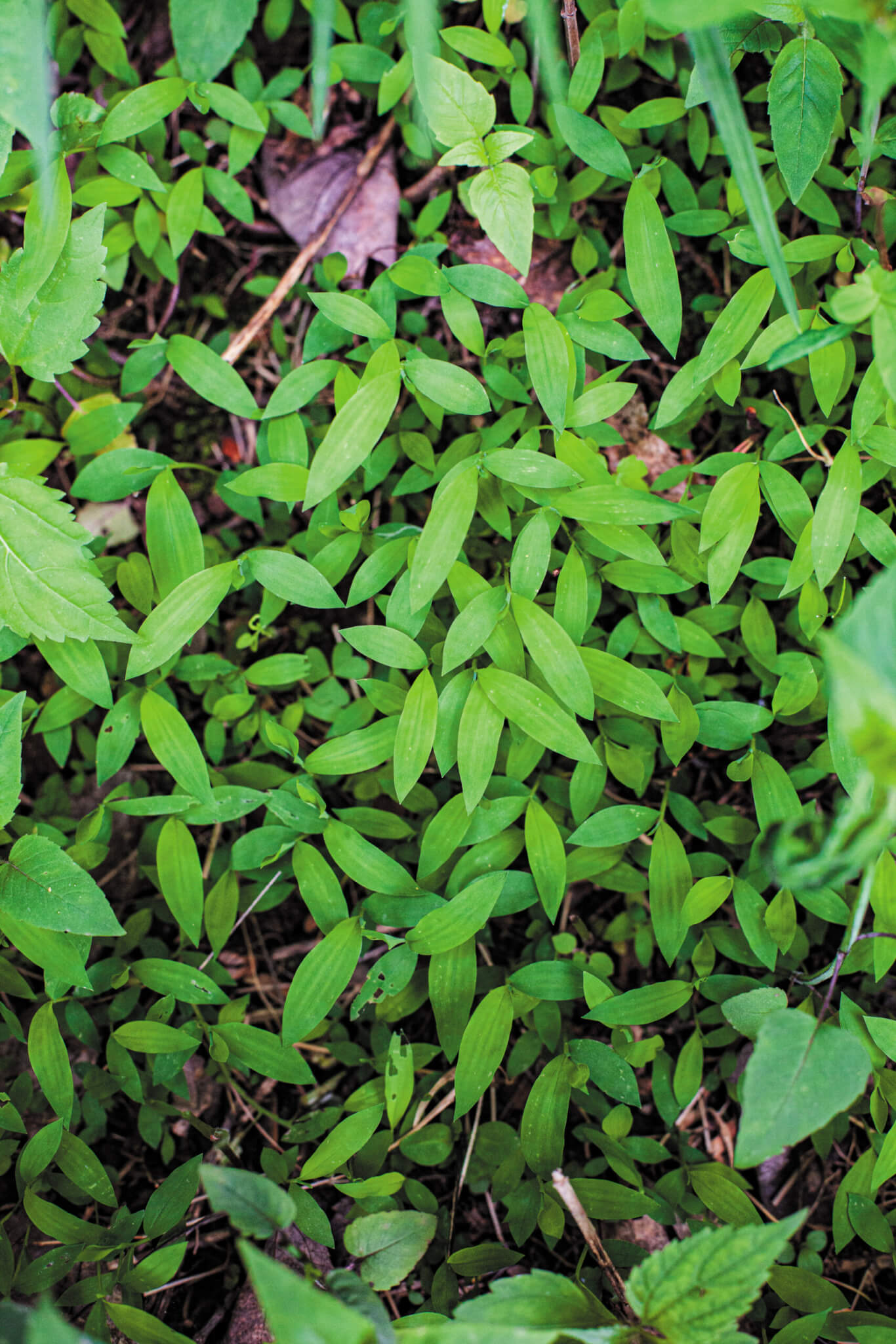
Many West Virginians find themselves fighting a wiry invader in their yards—but what exactly is it, and how do you get rid of it for good?
Written by Dawn Nolan
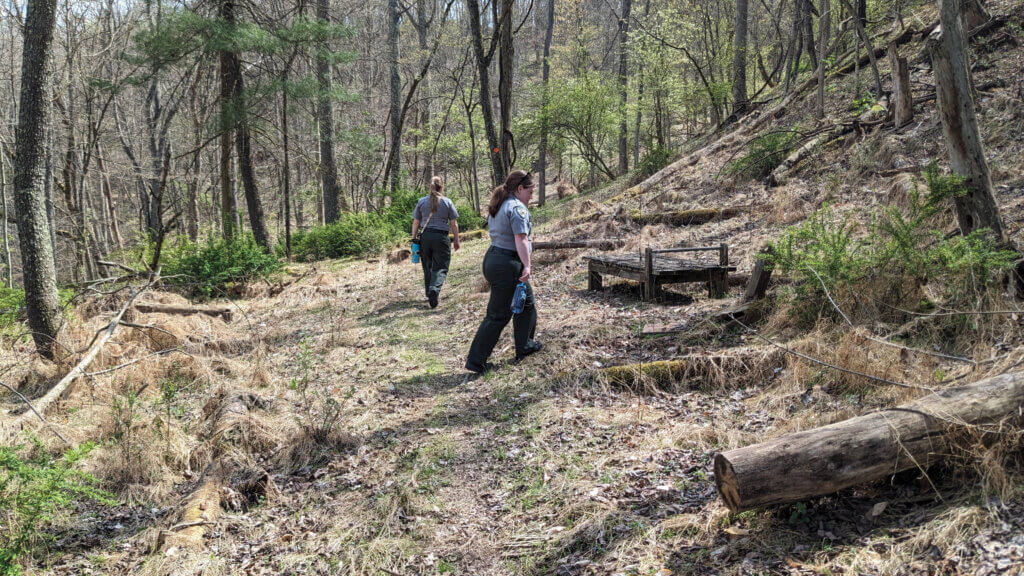
From colorful wildflowers to towering trees, West Virginia is often lauded for its attractive array of flora. But not all of the blooms are a welcome sight. One annual warm-weather weed, Japanese stiltgrass (Microstegium vimineum), is aggressively invasive in nature and can wreak havoc on plant life in parks, forests, yards, and gardens. In fact, it is considered one of the most damaging introduced plant species in the country.
“It’s extremely common, and it can be a real problem,” says Michelle Fonda, a wildlife biologist specializing in non-native species for the West Virginia Division of Natural Resources (WVDNR). “In terms of impact, we have to think ecologically. Like other invasive species, stiltgrass displaces the native plants that would otherwise be growing in a particular area. If there’s a layer—an understory—of stiltgrass, it can shade out native spring ephemerals and other plants and prevent them from getting established.”
Evidence has also shown that, when stiltgrass grows that densely, it can affect soil chemistry, she adds. “That can impact the ability of our native plants to survive and compete in that environment.”
From Asia to Appalachia: Stiltgrass’s Introduction
Japanese stiltgrass has several other common names, including Nepalese browntop, Chinese packing grass, Asian stiltgrass, annual jewgrass, bamboo grass, Nepal microstegium, eulalia, and Mary’s grass, according to the United States Department of Agriculture’s National Invasive Species Information Center. The plant is native to Asia and was introduced to the United States in the late 19th or early 20th century. The earliest definitive report of it was from Tennessee in 1919.
“Stiltgrass was used as a packing material for shipping porcelain that was imported, kind of like the packing peanuts that we use today,” Fonda says. An annual plant, stiltgrass is typically spread by seeds, which can remain viable for three to five years in soil. So once the porcelain was unpacked and the stiltgrass was discarded, the seeds were dispersed.
“A single plant can produce up to 1,000 seeds, and they spread rapidly,” Fonda explains. “Those seeds can be spread by animals getting them on their fur or by water. Then it can spread to your soil, gravel, or mulch from the mud on your shoes or tires. So you can see how easy it would be to spread—and that’s how it likely happened from where it was first introduced.”
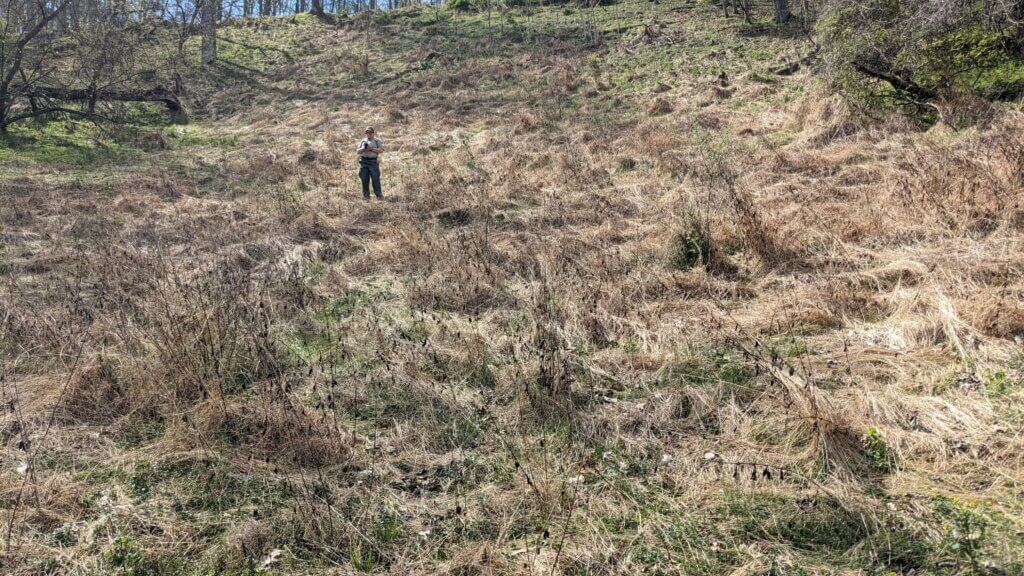
Over the last century, stiltgrass has spread to at least 26 states throughout Appalachia and along the East Coast. A 2015 inventory conducted by the U.S. Forest Service Northern Research Center on 5,865 forested Phase 2 invasive plots across the NRS region found that West Virginia had the highest amount of plots, 35%, with stiltgrass. “It’s found in most forests across the state,” says Fonda. “It’s in a lot of state parks and wildlife management areas. It’s an issue.”
Identification and Control
Some have described stiltgrass as resembling a smaller and more delicate bamboo, with thin, wiry, spiked stems and shallow roots. The seeds germinate in early spring and bloom by late summer.
In ideal conditions, stiltgrass can grow to be several feet tall, but on average, it measures about 1 to 3 feet high. The leaves are typically 1 to 3 inches long, lance-shaped—long and wider in the middle with pointed ends—asymmetrical, and well–spaced out. “One of the key characteristics to identifying stilt grass is the silver stripe along the midvein, or midrib, of the leaf, which is actually a little off-center,” Fonda says.
Stiltgrass grows in a variety of areas, but it does especially well in deep shade and moist, rich soil. “A lot of the time you’ll find it along road banks, logging roads, in floodplain forests along the stream banks, and then it gets spread quickly along utility roadways and ditches,” Fonda explains. “It also creeps into pastures and fields that are succeeding into shrub and forest.”
Although it can be time-consuming and tedious, one of the most efficient ways to control small infestations of stiltgrass is by pulling—which is easy, because it has shallow roots. You can pull stiltgrass up at any time of the year as long as you are careful when disposing of any seed heads or flowers—they need to be put in garbage bags and discarded with municipal waste rather than composted, Fonda says, because the seeds can live on in the soil. But it can be best to pull after mid-summer but before the stiltgrass starts blooming. “That can be most effective because, when you pull things up, you’re disturbing the soil, and that can sometimes cause the seeds that are in the seed bank to resprout. Mowing at a low height can also be effective, especially in that time before seeds are produced.”
Chemical means, such as herbicides, can also be used; Fonda stresses the necessity of reading the labels and choosing the correct type. “It’s always important to follow the label instructions on any herbicide that you use. And since stiltgrass can grow in some of those wetter areas, it’s really important to use herbicides that are labeled as safe for aquatic use whenever you’re working around wetlands or streams,” Fonda says.
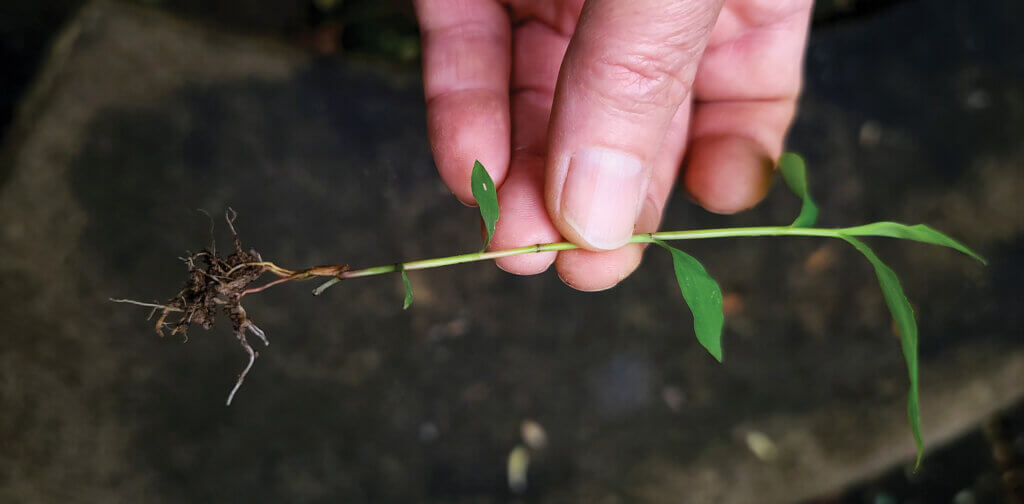
Pre- or post-emergent herbicides control stiltgrass in different ways, as do selective and non-selective herbicides, so the choice is a matter of your situation. “If you’re in an area where you have native wildflowers that are growing amongst the grass, for example, a pre-emergent herbicide or grass-selective herbicide might be the better choice. Pre-emergent herbicides will prevent the seed bank of the stiltgrass from germinating, but they won’t impact perennial plants because they are already established. It will really impact the stiltgrass, because it is an annual and has to start from seed each year.”
Post-emergent herbicides are applied to the leaves after the stiltgrass has bloomed. “If you use pre-emergent and follow up with post-emergent herbicides, that can be more effective than just using pre-emergent herbicide alone,” says Fonda.
Eliminating stiltgrass with the use of an herbicide is not a one-and-done process. “Because of the abundant seed bank, you typically need to do treatment for a couple of growing seasons in order to achieve good control—also to allow for establishment, if you’re planting things, or reestablishment if you’re hoping to draw from the native seed bank to develop new vegetation.”
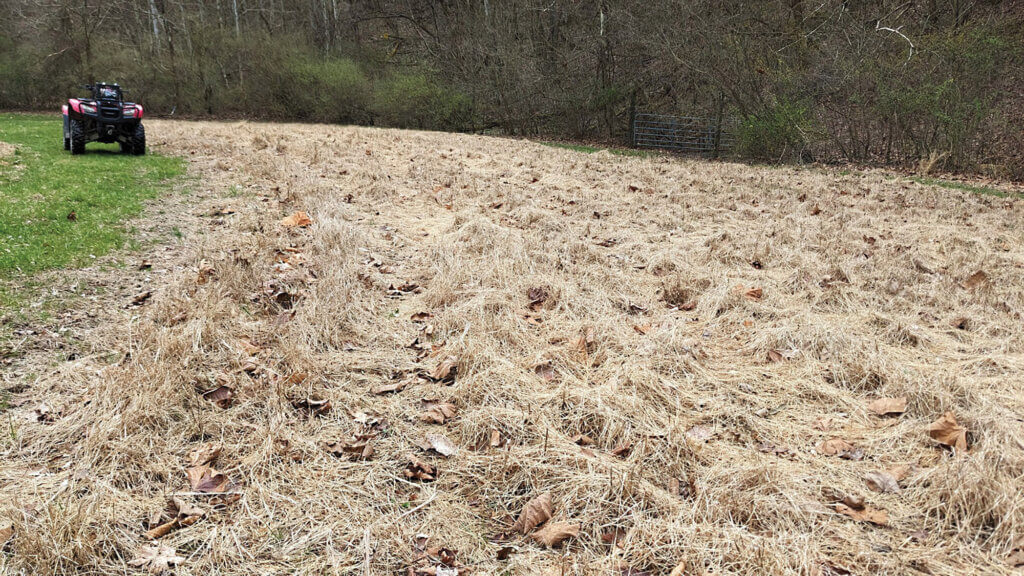
Pulling, mowing, and herbicides might all work to control stiltgrass on a small scale, Fonda says, but the best way to hinder the spread of invasive plant species is to prevent them from getting established in the first place. “One simple thing is to clean your shoes, bikes, or other equipment after being in an area with stiltgrass to prevent it from spreading to new areas. This will also help not spread any other invasive species that you might come in contact with.”
Addressing the Issue
The West Virginia State Parks section of WVDNR is working to understand the ecology of stiltgrass and how to manage it on different landscapes. Assistance is also provided to protect high-quality areas—specifically those that have rare plants and wildlife—from invasive species, while also addressing areas that have already been affected. “Getting rid of stiltgrass completely might not be realistic, but at least if we are able to cut it back some. The native vegetation can coexist, and we can have a functioning understory of native plants instead of the monoculture of stiltgrass.”
Further, the WVDNR is working with its partner pollinator biologist at the Natural Resources Conservation Service on a pilot project to try to determine whether solarization can be used as a non-chemical method for controlling stiltgrass in preparation for pollinator planting. “We’ll be working on that for the rest of this year and next,” says Fonda.
To learn more about West Virginia’s invasive plant species, visit www.wvdnr.gov/exotic-and-invasive-species.
Stiltgrass at a Glance
- 1–3 feet tall
- thin, spiked stems
- lance-shaped leaves, 1–3 inches long
- silver stripe along the midvein
- shallowly rooted
- blooms in late summer
- thrives in moist, shaded areas






